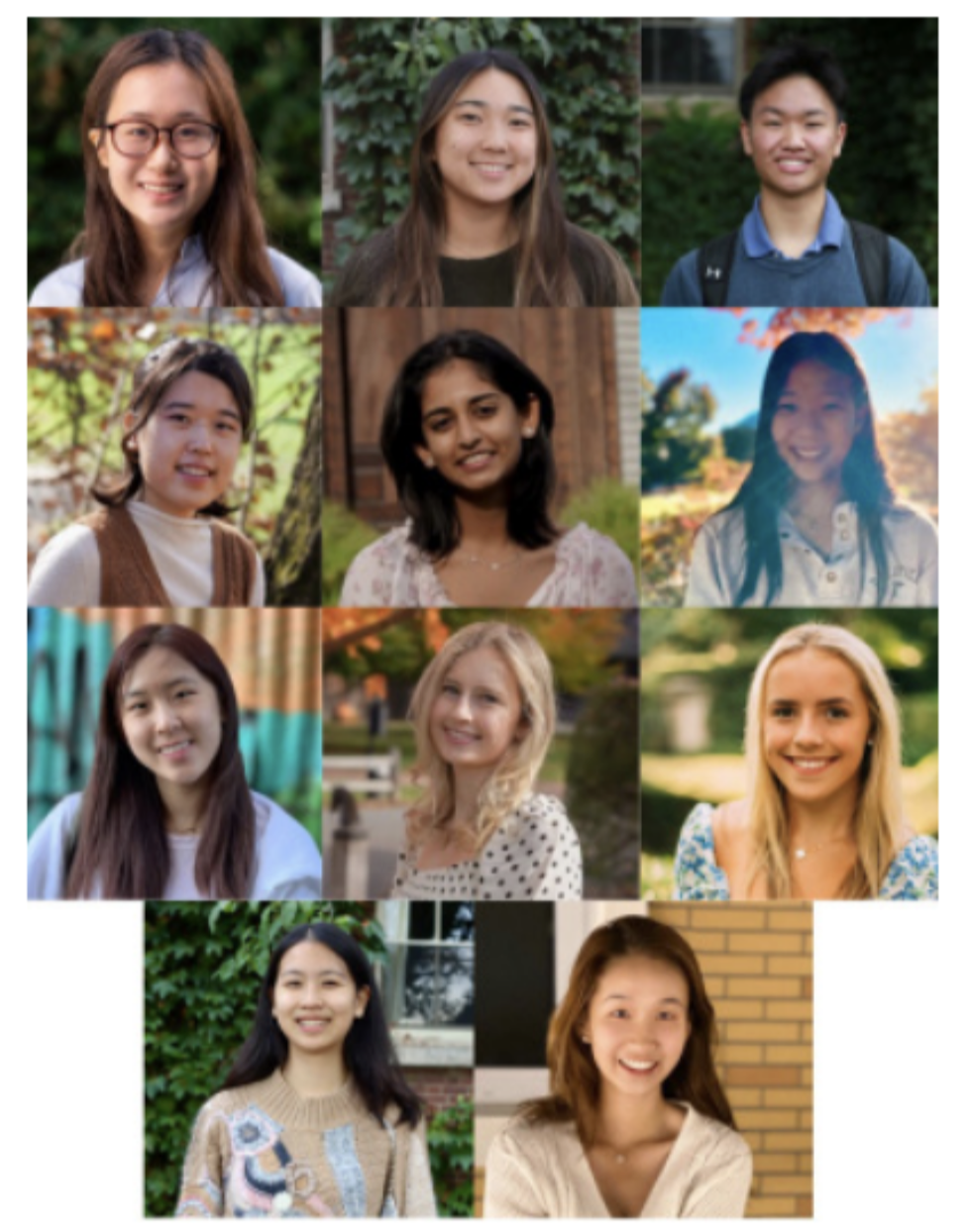


The white boys sitting in rows of chairs in the 1933 and 1964 Scroll Board photographs above, clad in suits and flat stares, could likely never in their wildest dreams imagine that a future Scroll Board would one day look anything like ours. Twelve out of the thirteen Scroll XCVII board members are female-identifying, while eleven, including our sole male-identifying member, are Asian.
Deerfield, along with the majority of the Western world, has not historically been a place for girls or people of color. For instance, the Academy only returned to being a coeducational institution in 1989 after nearly all of its peer schools had already made the change. And, with a long-standing majority-white student and faculty population, Deerfield’s culture, beauty standards, and family legacies tend to exclude — whether purposefully or not — students of color.
Thus, it may seem like a good sign that our board is mostly Asian. But a closer glance reveals that we still lack diversity—our leadership fails to accurately reflect student demographics. We lack Latinx, Black, and Indigenous voices. Our staff writers as a whole also tend to fall short when it comes to diversity.
What impact does this lack of diversity have on the Scroll’s reporting? Though we would like to claim that our brainstorming and writing processes function without biases, most readers know that achieving such a level of objectivity is impossible. Instead, our writers often bring article ideas from their daily experiences as a Deerfield student, which are often influenced by key markers of identity, such as race. When it comes to our board, our races, genders, and personal backgrounds also inform our opinions and perspectives on the world, which turn into our Board Editorials (like the one you are reading currently) and Letters from the Editor.
How do we remedy the Scroll’s lack of diversity then? Addressing this question brings up countless others. Are there cultural forces causing mostly Asian students to join the Scroll? How do students perceive the Scroll on campus in general? The list goes on.
Though we are proud of how far the Scroll has come since its earliest decades, diversifying the publication will likely be a never-ending project that we will continue to pursue.

